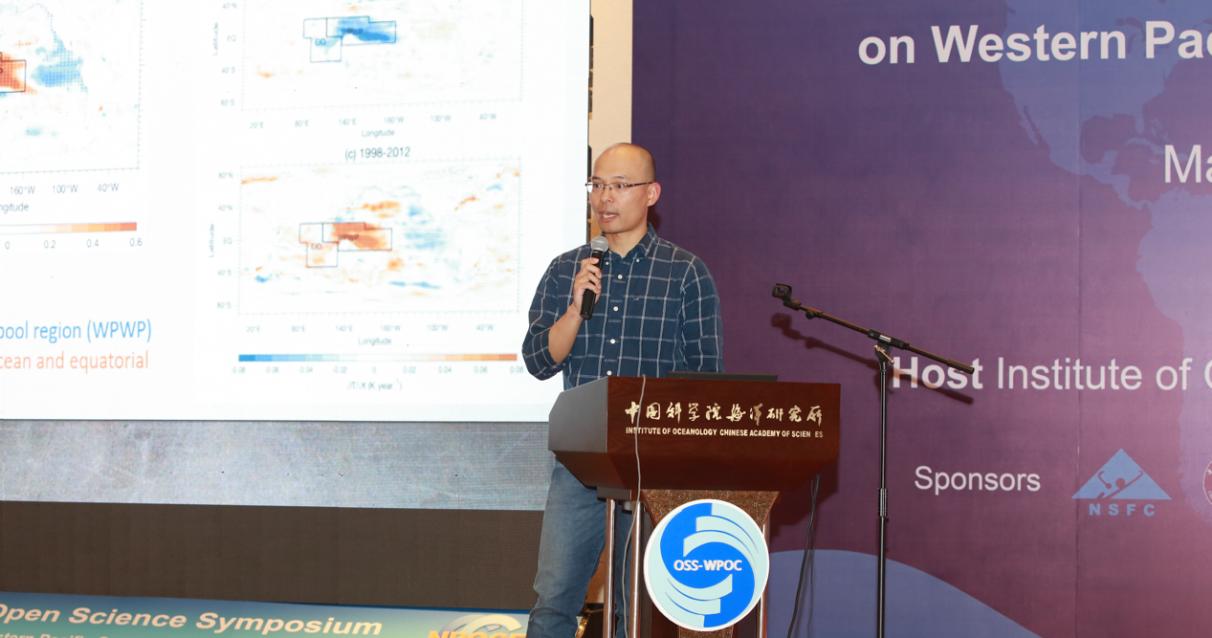(Text by LI Yuanlong, liyuanlong@qdio.ac.cn)

Yuanlong was giving a speech in an international workshop. Credit: Institute of Oceanology, Chinese Academy of Sciences
This photo was photographed on May 24, 2018. I was talking about the Indo-Pacific Ocean heat storage under global warming in an international workshop. I hope my research on subsurface ocean thermodynamics will advance the understanding and prediction of climate change.
I have been interested in the response of the subsurface ocean to climate change and variability for more than fifteen years. For my PhD at Institute of Oceanology, Chinese Academy of Science (IOCAS), I studied the western tropical Pacific water masses, which are linked to El Nino, mainly using observational data. During my postdoc research at the University of Colorado, Boulder, I performed more in-depth research on the Indian Ocean temperature and salinity, in which I utilized numerical models to perform hindcasts and experiments to gain insights into the mechanisms.
Since 2017, I have worked in the Key Laboratory of Ocean Circulation and Waves (KLOCAW) of CAS as a research scientist. My group - with several young faculties, postdocs, and students - mainly works on ocean subsurface temperature and salinity changes in response to the ongoing climate change. The impacts and implications of our research broadly include climate change, local weather, regional sea level, air-sea interaction, and marine biodiversity.
My main goal is to identify and understand the long-term ocean subsurface temperature and salinity changes and link them to climate change and variability. These efforts are supposed to contribute to the prediction of climate change from the oceanic perspective.
During the past several years, we conducted investigation for "intraseasonal and decadal variabilities of the Indian Ocean temperature and salinity". Our primary findings include 1) the mechanisms of intraseasonal temperature and salinity variabilities and their impacts on the South Asian summer monsoon, 2) prominent interdecadal variability of the Indian Ocean heat content and its vertical structure, and 3) a decadal heat convergence phenomenon in the southeast Indian Ocean with linkage to strong marine heatwave and flood events.
With useful implications for model prediction of climate change and marine disasters, I believe our achievements are useful for our understanding of the multi-timescale variabilities of the Indian Ocean and relevant air-sea interaction processes.
(Editor: ZHANG Yiyi)

